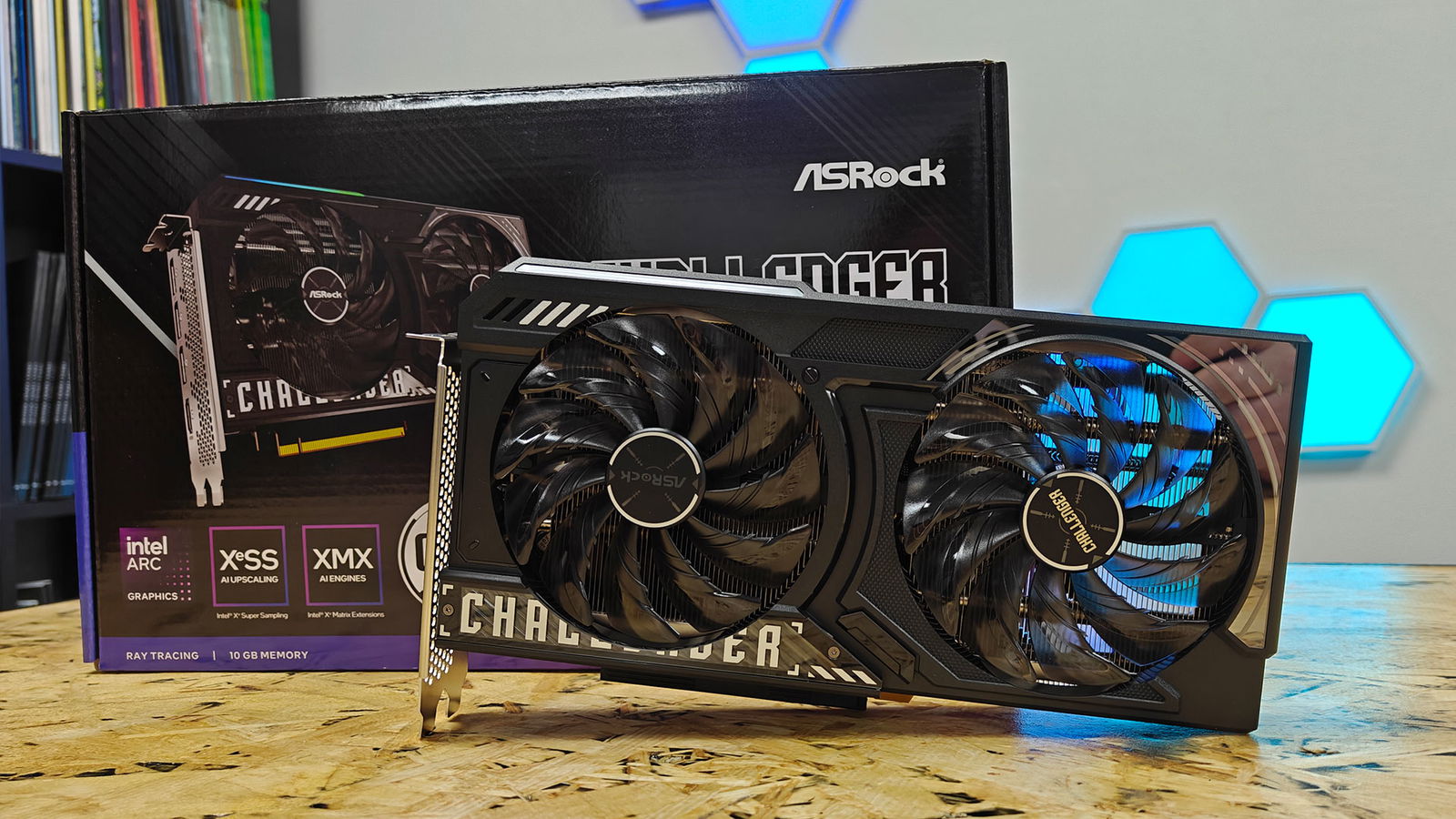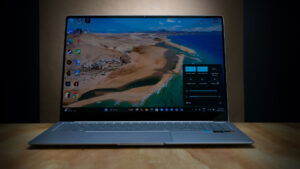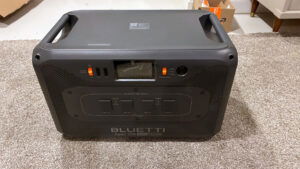The ASROCK Challenger Intel ARC B570 Graphics card is one of the two newest GPUs to be released by Intel. Built on the Xe2 microarchitecture this PCI2 4.0 x8 card supports Ray Tracing and HDR10+ and aims to be a cost-effective solution for 1440p gaming. Leaning hard on the cost-effective 1440p GPU for gamers, the ARC B570 has a high bar to reach to beat out other, more established GPUs in its target demographic.
Aesthetic and Build Quality
While the ASROCK Challenger variation of the ARC B570 offers some fun LED flourishes, the size stands out most on this GPU. While it holds to the standard dual-slot width, the B570 measures 10.7 inches in length by 4.5 inches in width, making it one of the more compact GPUs we’ve reviewed over the past year and ideal for smaller case builds.

The dual fan setup offers solid cooling and is impressively quiet when running. Aesthetically, the ASROCK Challenger variant offers a nice casing to house the ARC B570 with a cut-out along the top of the card to allow better heat dissipation from the card. On the note of heat dissipation, along with the heat syncs located on the top, additional heat syncs are situated along the front of the card that is likewise exposed. This provides a unique look to the Challenger as well as effectively focusing the areas of heat dissipation thanks to the heat sync fins being so densely packed together.
“The ASROCK Challenger Intel ARC B570 Graphics Card is a solid budget option that produces respectable numbers across the board.”
Cooling is a highlight of the ASROCK Challenger. Using its in-house Striped Axial fan design, ASROCK has built a cooling system that pushes air through the GPU faster than the average fan. When paired with a heat pipe system that covers a larger area of the processor, the result is an impressively cool GPU. It’s a solid system that works well with this more compact card design.
Shifting back to aesthetics, the aforementioned LED strip is located on the left side of the card and is used as an indicator light. As of the time of writing, there is no software to manage the LEDit’s simply on though there is a small physical switch if you prefer the LED off. On the note of software, there is no software at all. Driver updates are handled from the official Intel Driver & Support Assistant website, leaving you with little by way of gaming optimization profile management or system monitoring afforded you by NVIDIA or AMD.
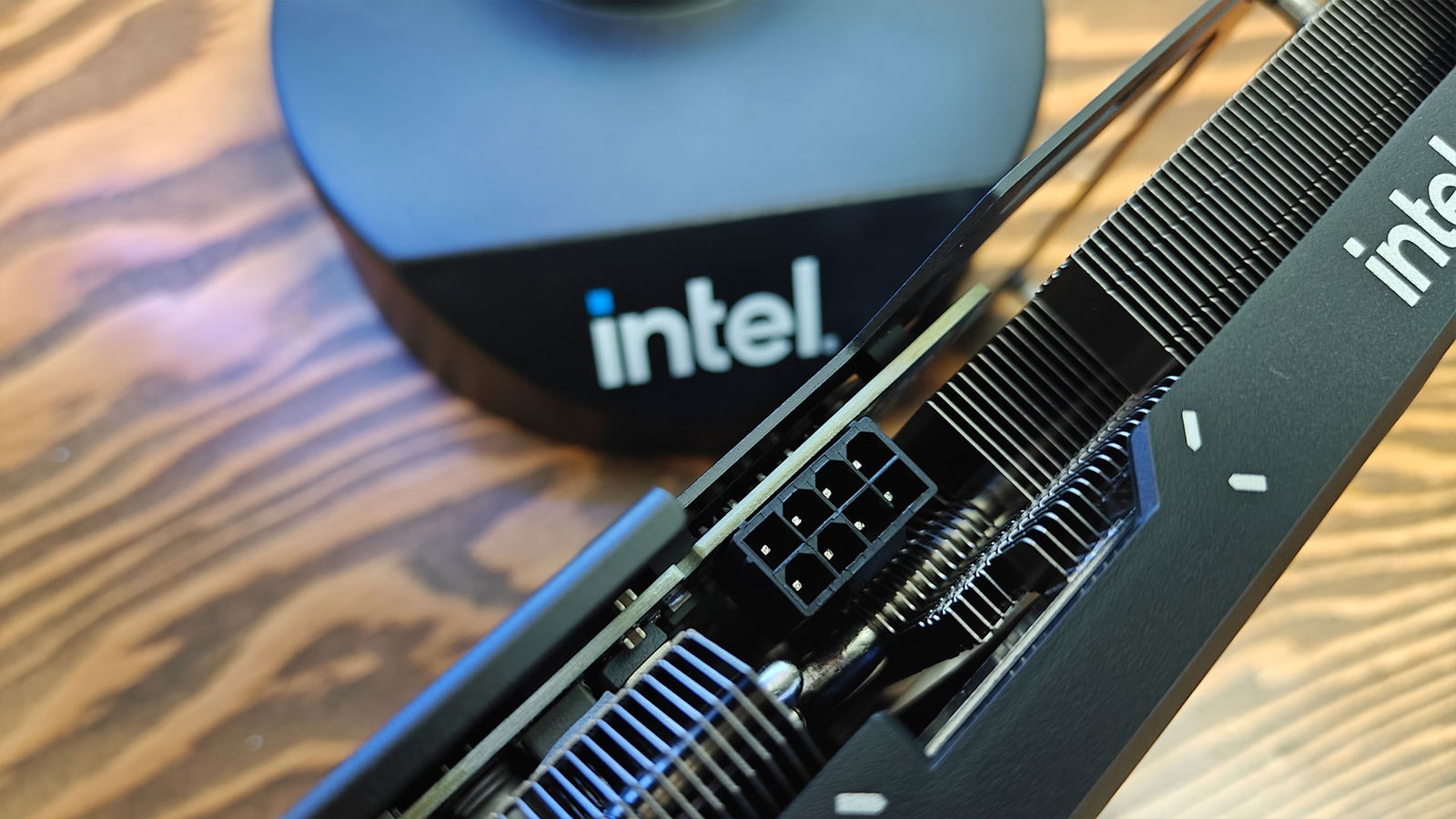
This is a bit disappointing as it leaves you with little to customize or configure. You simply have what you have. While there are some use cases where a plug-and-play experience is preferred, I’ve come to appreciate both AMD Adrenalin and the GeForce Experience for game optimization, Profile management and driver updates. Some type of software interface would be nice to see in future releases of the ARC series.
The ASROCK Challenger is a well-built card and offers a fairly straightforward, plug-and-play experience. Once installed, a quick driver install will have you up and running without the need to download any additional software. Thankfully there is an Intel Driver Assistant that is added to the system tray and can be used to access the aforementioned driver and support assistant website for driver updates.
Technical Specifications
The ARC B570 leverages some pretty solid specs to achieve its 1440p target. Supporting up to bus speeds of PCI Express4.0 x 8, the B570 can work in both newer and older motherboards effectively, making it a fairly adaptable GPU (more on this later). 10GB of GDDR6 RAM and a clock speed of 2600MHz means the ARC B570 balances power with cost-effectiveness.
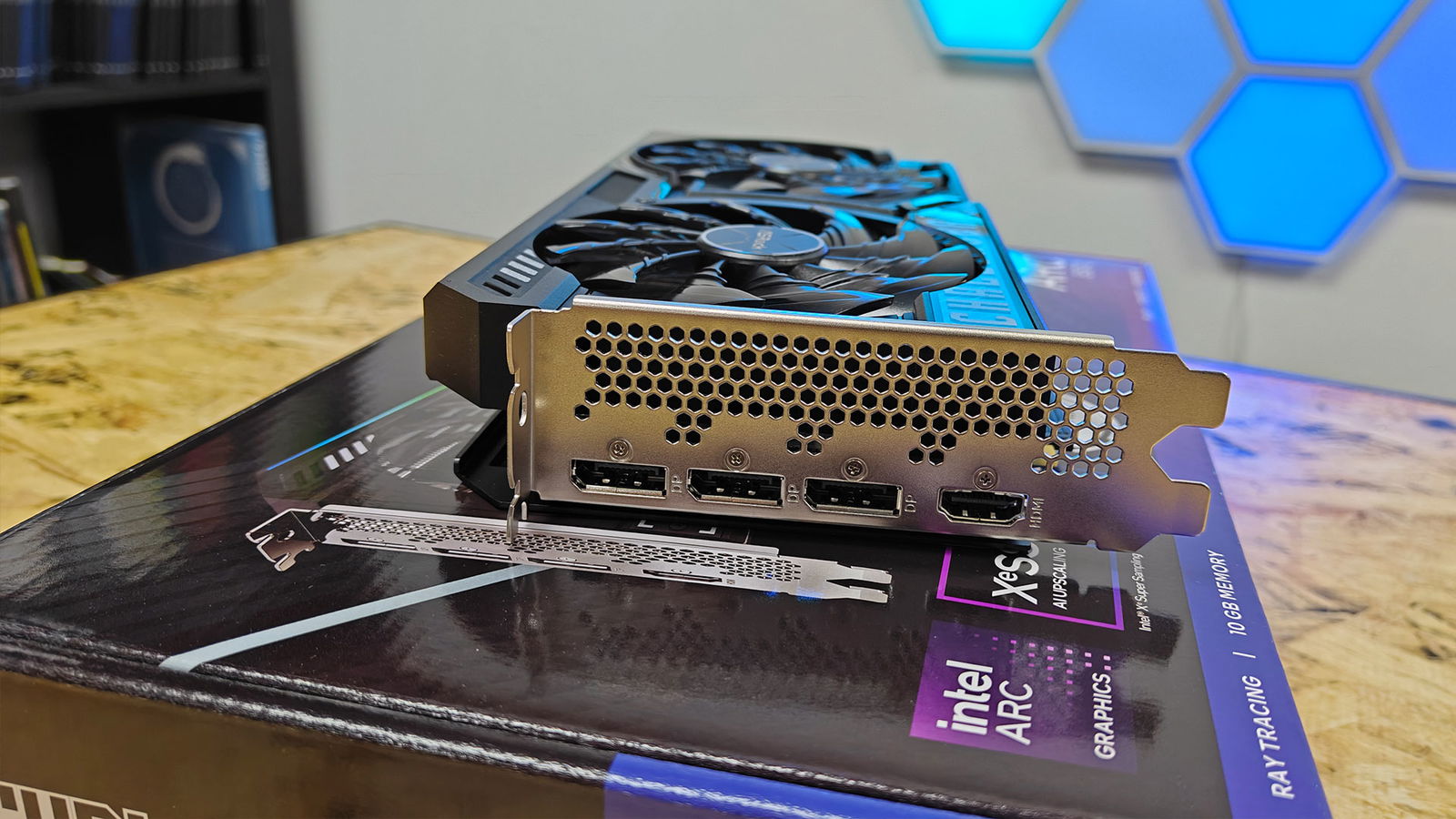
As for power requirements, while the official Total Board Power (TBP) requirements are 150W, ASROCK recommends a 600W PSU for the Challenger, which is comparable to the NVIDIA GeForce RTX 4060. A single 8-pin connector is all that is required from the PSU to fire up and maintain power to the card as well.
“With its Intel Xe2-HPG Architecture, the ARC B570 provides better rendering and mesh shading, translating to smoother, sharper images without major framerate loss.”
The ARC B570 can officially support resolutions up to 7680×4320 but in practical reality works quite effectively at 1440p. On the note of resolution, the Challenger has four ports for the monitor to connect to; a single DisplayPort 2.1 (UHBR 13.5), two DisplayPort 2.1 (UHBR10) and a single HDMI 2.1a. A multi-monitor setup works great on the ARC B570 even with multiple resolutions running across the monitors.
As for infrastructure support, the ARC B570 is ready for the latest games and processes. DirectX 12 Ultimate, Intel X Super Sampling 2 (Intel X SS2) and Intel Matrix Extensions (Intel XMX) all work in tandem to ensure that the ARC B570 provides the best video fidelity while still maintaining respectable frame rates during gameplay. All of this falls under the Intel Xe2-HPG Architecture.

The value of the Intel Xe2-HPG Architecture is that it’s built from the ground up to be more compatible with a wider range of applications and games than the previous generation. It provides better rendering and mesh shading which translates to a smoother, sharper image on screen without major loss of framerate. Intel has taken a bit of a unique approach to its GPU architecture, leaning hard into AI processing to help boost performance on integer and floating-point computing.
The idea is to achieve similar results to the competition but at a more cost-effective price point. This design makes sense given Intel’s push toward AI-driven architectures in the most recent generation of CPUs. The goal of the ARC B570 is to produce more quality with less overall hardware requirements.
Performance Benchmarks
While benchmarks only tell part of the story, it’s important to see how the B570 stacks up against other GPUs in its range. Initial benchmarks were performed on our bench rig here at the office using an AMD Ryzen 9 9900X 12-Core Processor, 64 GB DDR5 RAM and an X870 AORUS ELITE WIFI7 Motherboard powered by a bequiet! Straight Power 12 1500W PSU. All tests were performed at Ultra settings across a consistent range of games.
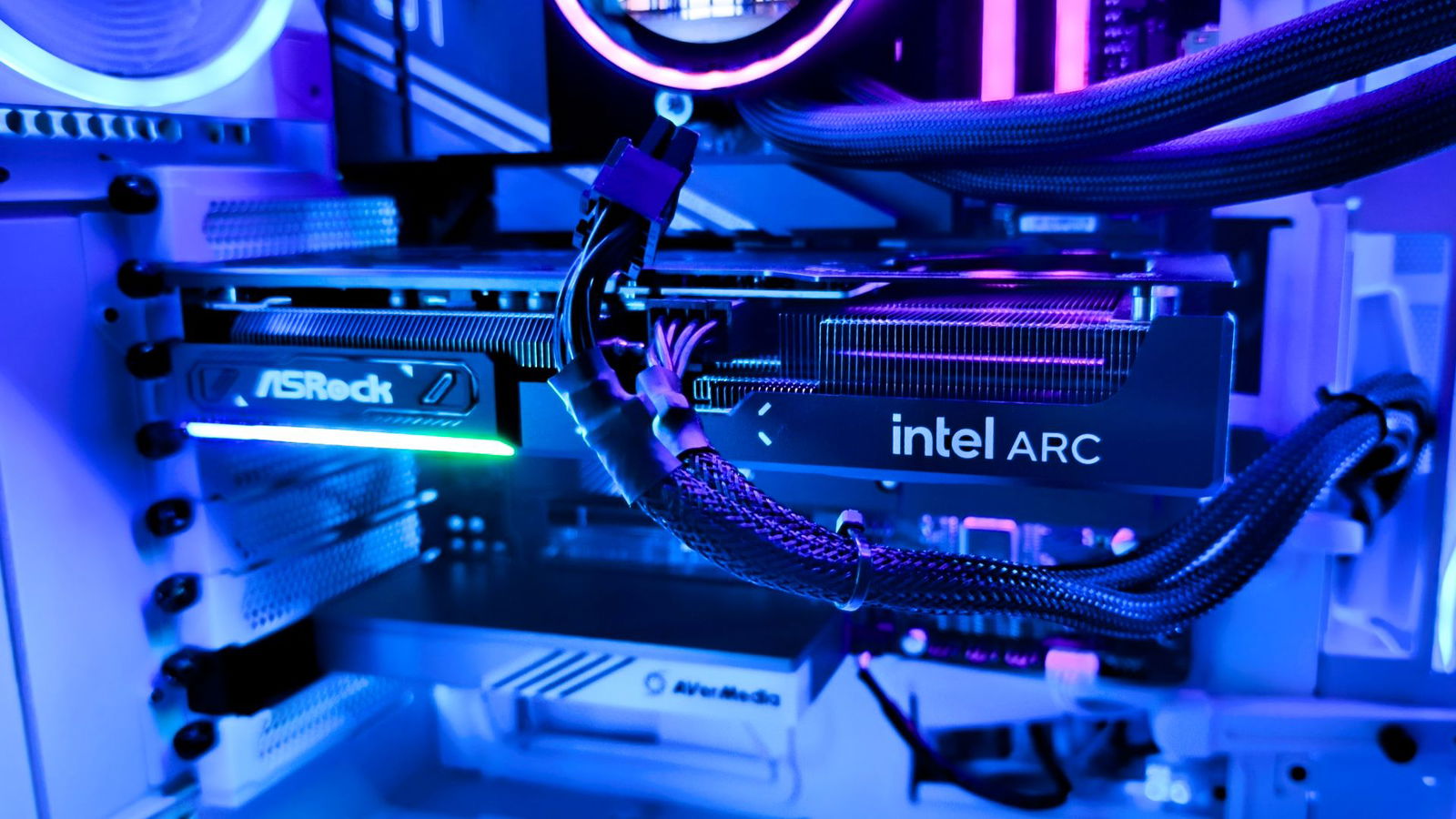
Overall, the ARC B570 performed respectably in 1440p testing. While it consistently lagged behind the RTX 4060 Ti, it managed to maintain frame rates above 60 fps in almost every test, with a few exceptions. While Shadow of the Tomb Raider and the Assassin’s Creed titles performed as expected, I was surprised at how well the ARC B570 handled Cyberpunk 2077 at Ultra settings. Although it struggled slightly with ray tracing enabled, it still held a solid 52 fps throughout the benchmark. Considering the $180 price difference, the B570 appears to offer a viable alternative.
One notable drawback is that the B570 did not support frame generation in all titles. This limitation is partly due to the relatively new ARC GPU architecture, which, while improving in game compatibility, is still working on integration with some modern titles. Over time, this issue is likely to diminish. For titles that do support ARC frame generation, such as Shadow of the Tomb Raider, there was a significant jump in fps, which is promising for future driver updates and improved game support.
| 1440P Benchmarks | RX 7600 | Intel Arc A750 | RTX 4060 Ti | Intel ARC B580 | Intel ARC B570 |
|---|---|---|---|---|---|
| Shadow of the Tomb Raider | 86 | 77 | 131 | 106 | 85 |
| Shadow of the Tomb Raider + FG | – | 107 | 166 | 165 | 106 |
| Gears 5 | 74.5 | 61.5 | 77.8 | 71.9 | 66.6 |
| Assassin’s Creed Mirage | 72 | 57 | 112 | 66 | 61 |
| Assassin’s Creed Valhalla | 106 | 59 | 86 | 78 | 67 |
| Watch Dogs Legion | 60 | 47 | 67 | 54 | 51 |
| Cyberpunk 2077 | 54.37 | 67.5 | 68.45 | 86.49 | 75.3 |
| Cyberpunk 2077 + RT | 8.05 | 39.41 | 48.67 | 59.87 | 52.21 |
| Cyberpunk 2077 RT FG | 26.12 | – | 55.44 | – | – |
| F1 24 | 85 | 79 | 111 | 88 | 61.6 |
| F1 24 + FG | – | – | 140 | 157 | |
| Hitman 3 | 109.01 | 56.36 | – | 99.44 | 83.17 |
Shifting to the 1080p testing, the ARC B570 once again performed quite well. While not quite on par with the 4060 Ti, it still managed to deliver impressive numbers. Across the board, it maintained frame rates above 60 fps. Even with ray tracing enabled in titles like Cyberpunk 2077, the ARC B570 consistently stayed above 60 fps.
On the subject of ray tracing, I was impressed by how well the ARC B570 handled it. I had fairly low expectations going into the benchmarks, but the results were surprising. While performance will likely depend heavily on the specific title, the fact that the ARC B570 performed as well as it did during testing is promising.
| 1080P Benchmarks | RX 7600 | RTX 4060 Ti | Intel ARC B580 | Intel ARC B570 |
|---|---|---|---|---|
| Shadow of the Tomb Raider | 134 | 198 | 167 | 116 |
| Shadow of the Tomb Raider + FG | – | 224 | 188 | 145 |
| Gears 5 | 111.4 | 83.2 | 91.5 | 88.2 |
| Assassin’s Creed Mirage | 106 | 121 | 85 | 73 |
| Assassin’s Creed Valhalla | 141 | 115 | 101 | 83 |
| Watch Dogs Legion | 79 | 94 | 66 | 62 |
| Cyberpunk 2077 | 85.22 | 112.76 | 118.69 | 103.41 |
| Cyberpunk 2077 + RT | 18.15 | 54.96 | 71.53 | 61.49 |
| Cyberpunk 2077 RT FG | 34.17 | 65.13 | – | – |
| F1 24 | 98 | 131 | 101 | 61.1 |
| F1 24 + FG | – | 142 | 189 | – |
| Hitman 3 | 120.26 | – | 121.66 | 99.16 |
These are some impressive numbers across the board, especially considering that they were achieved with a $220.00 video card. For those looking for a budget PC GPU option, it looks like the ARC B570 could very well be the solution you’re looking for. It offers great value per dollar and thanks to its smaller footprint fits well in most cases.
“While its ray tracing performance is decent, the ARC B570 particularly shines with content creation tasks, leveraging Intel’s Xe media engine for efficient video editing and transcoding.”
Another area in which the ARC B750 performs well is in video encoding for content creation. In video edit testing with Davinci Resolve, the ARC B750 handled video and transitions during the edits quite well. Once loaded into the media bin, raw video files were accessible for live preview without hesitation. For content creators, there is a lot to like with the ARC B570.
This efficiency with content creation can be attributed to Intel’s Xe media engine. This engine allows for twin media transcoding and support for dual-encode. In essence, the Xe media engine is a dedicated engine for video processing independent of compute engines. This allows for faster editing at high resolutions without bogging down your system. It’s a slick little system that works quite well in testing.
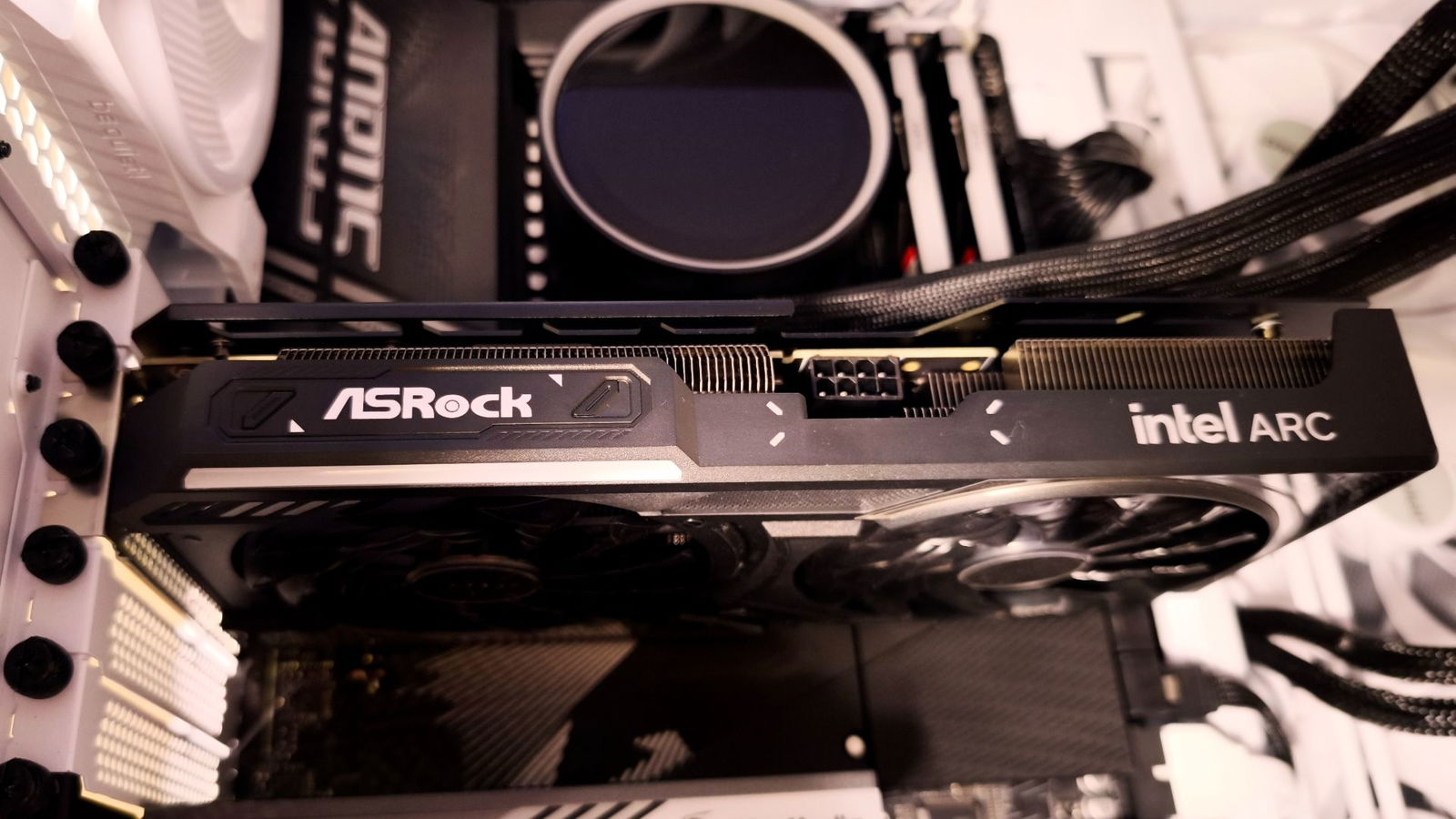
It is worth noting that while my benchmark testing has shown the ARC B570 to be a more than capable card, there have been recent reports of compatibility issues with its big brother the ACR B580 and older CPUs. In full transparency, I don’t have access to some of the older CPUs tested in these articles and videos to confirm, but there has been consistent data across multiple sites and videos to support these claims. With the ACR B580 and B570 being built on the same architecture it seems logical to assume that this issue would affect both cards.
On older CPUs, there is a delay between the CPU issuing a command to the GPU and the GPU processing that information to generate a frame. This is referred to as GPU overhead. While this explanation is a bit of an oversimplification, it conveys the general issue: the CPU is slow to tell the GPU what to do.
That said, driver updates will likely resolve these issues. Testing on newer processors indicates this isn’t a problem at all. I mention it here for those using slightly older processors so you can make an informed decision when shopping for what seems to be a cost-effective GPU solution. It is, but there is a caveat regarding compatibility.
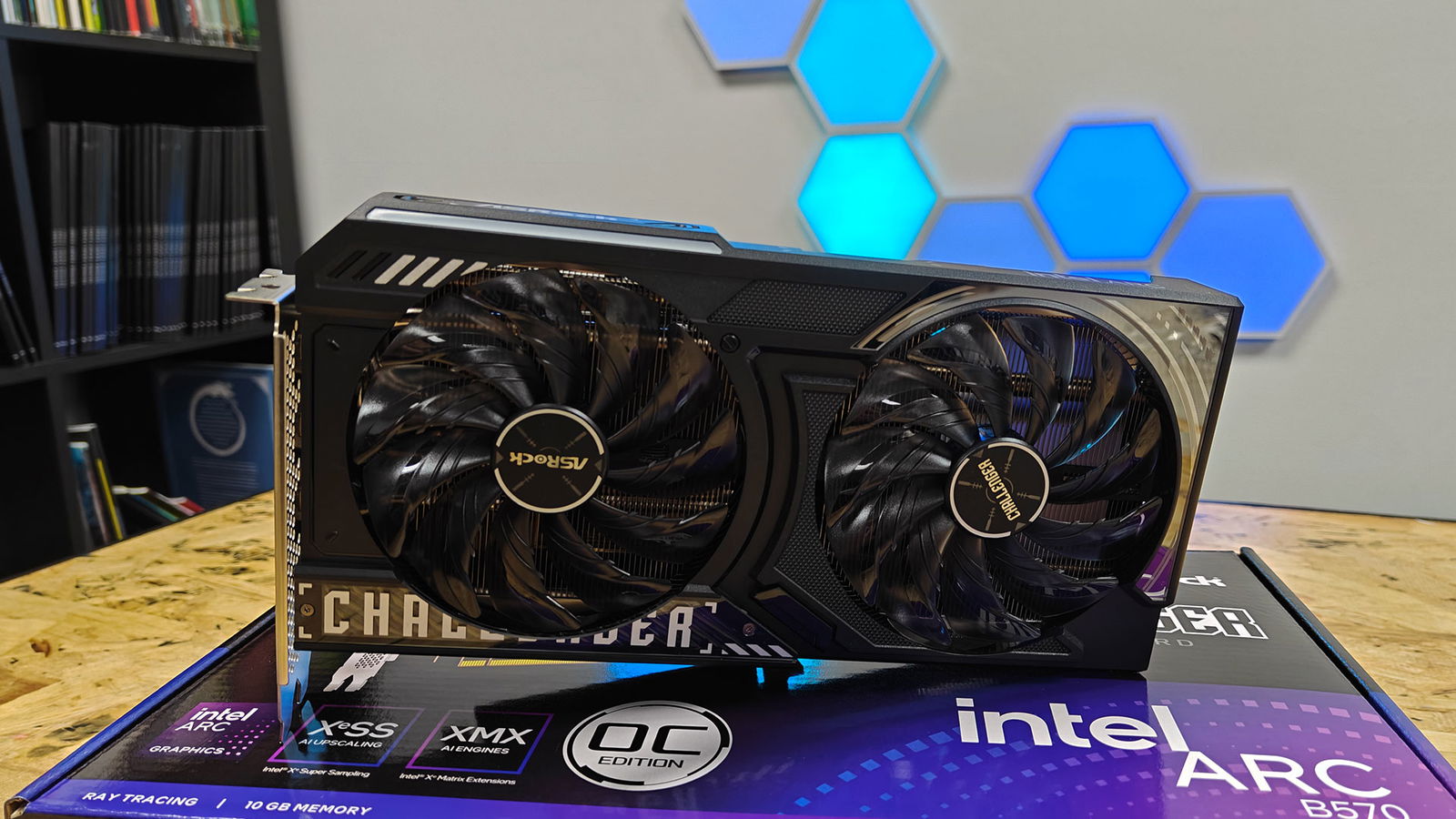
Final Thoughts
The ASROCK Challenger Intel ARC B570 Graphics Card is a solid budget option that produces respectable numbers across the board. While it lacks a solid software interface, its easy-to-install, plug-and-play experience will appeal to a lot of gamers. While there are some ongoing concerns about pairing the ARC B570 with older CPUs, the overall experience and testing with the ASROCK Challenger Intel ARC B570 has been positive. Hopefully with time and a few driver updates the B570 truly will be the cost-effective and accessible GPU for all gamers.
